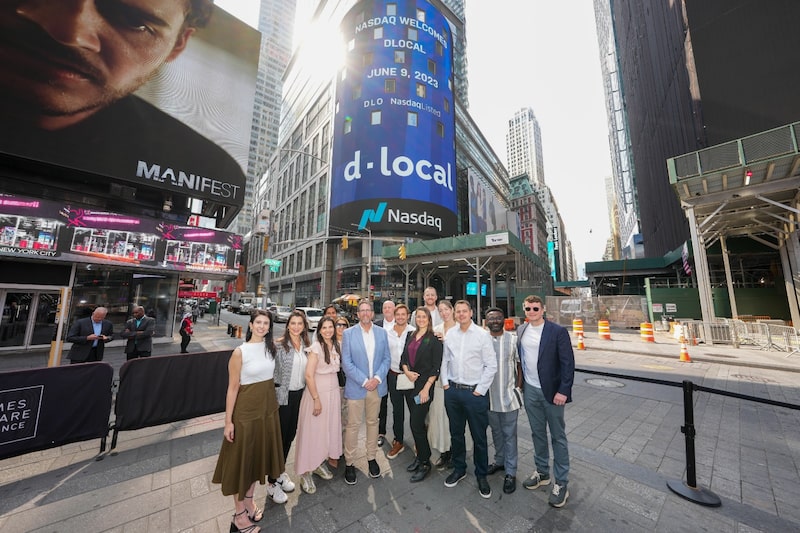Bloomberg Línea — In the midst of challenging market conditions, including fluctuating interest rates, recession concerns, inflation, and regional bank collapses in the US, the environment for IPOs has faced significant hurdles. However, industry experts remain optimistic, predicting a market rebound by the end of the year, with some Latin American companies expected to follow suit in 2024.
Serial entrepreneurship and venture capital boom in recent years - $46 billion was raised by LatAm companies from 2018 to 2022, according to Sling Hub - created unicorns and companies in Latin America that were preparing themselves for a potential public market debut, reportedly Ebanx and PicPay, for instance.
“What I hear from my colleagues from the global perspective is that the market will come back by the end of the year and of course Latin America will follow. Maybe we will see Latin America coming in 2024, we do have companies preparing themselves for a few months now,” said Ivana Ferreira, head of Latin America listings at Nasdaq, in an interview with Bloomberg Línea at Nasdaq’s headquarters in New York.
Fidelity-backed Creditas, for instance, which focuses on secured lending, is one of Latin America’s most valuable startups and a candidate for an IPO in the eyes of capital markets experts.
At Creditas, the plan is to achieve a profit before going public, however. CEO Sergio Furio hopes to take the company to an IPO if the market reopens in 2024 and if the company is profitable. If interest rates remain stable, the fintech believes it can reach breakeven by December.
These companies have varied motivations for going public, ranging from geographical expansion to accessing a broader investor base, according to Ferreira. “It is crucial to note that the listing day is a significant milestone, but it is only the beginning of their journey as a public company. So we need to make sure that you are going to continue to tell the story, scale, and report to your board and investors properly,” she said.
Ferreira recalls that in 2020 and 2021 there were many IPOs out of the region and each one attracted a large amount of investors. Nubank, for instance, raised $2.6 billion in its NYSE IPO, dLocal raised $617.65 million in its initial public offering, while VTEX raised $361 million in its 2021 IPO.
Since 2018, nearly 30 Latin American companies from various sectors, including finance, education, agriculture, and energy, have successfully listed on Nasdaq.
In recent years, more and more entrepreneurs of Latin America have published photos of their companies being the spotlight on Nasdaq’s facade on Times Square, as the stock exchange, in a way to approach entrepreneurs and startups in various cycles, showcased recent events such as acquisitions and fundraising.
Nasdaq offers a suite of services to its listed companies including investor relations, support, and corporate branding, besides access to Nasdaq’s market site events, the entrepreneurial center in San Francisco, and inclusion in its indexes provides a unique opportunity for listed companies to grow and thrive.
Ferreira says the exchange aims to provide corporations with a wide range of tools and resources, leveraging the deeper pool of liquidity and diverse investor base offered by the US market. Also, offering global visibility and brand recognition, along with access to a mature tech sector and the use of US currency for mergers and acquisitions, are additional advantages that attract Latin American companies to list there rather than on their local markets.
Nasdaq says AI is not a bubble
Nasdaq says it has been leveraging artificial intelligence, identifying patterns of behavior, and making it get smarter. The exchange on Monday announced that it has agreed to buy financial-software maker Adenza from its private equity owners Thoma Bravo in a $10.5-billion deal.
“AI is not a new thing,” says Ferreira, adding that AI has been developed for a while. The difference now is the opportunity of those AI companies that will have a lot of benefits in many areas by embedding this tech, she says.
“Everyone in every company will begin looking at this because they want to make sure AI comes to benefit. I don’t think it’s a bubble, it’s a new technology. Many others will come. I love to embrace every new technology. As Nasdaq we have been using AI in our products for many years now.”
At least 10 SPACs in line to find mergers
While Special Purpose Acquisition Companies (SPACs) have gained significant attention in recent years, the current uncertain market has posed challenges for companies seeking business combinations. Nevertheless, Nasdaq remains optimistic, predicting SPAC listings to continue with the help of reputable sponsors. The key lies in finding suitable targets for these SPACs.
XP, Patria, MEKA (Mercado Libre and Kaszek’s SPAC), are some of the at least 10 blank-check firms actively seeking targets in the Latin American region.




